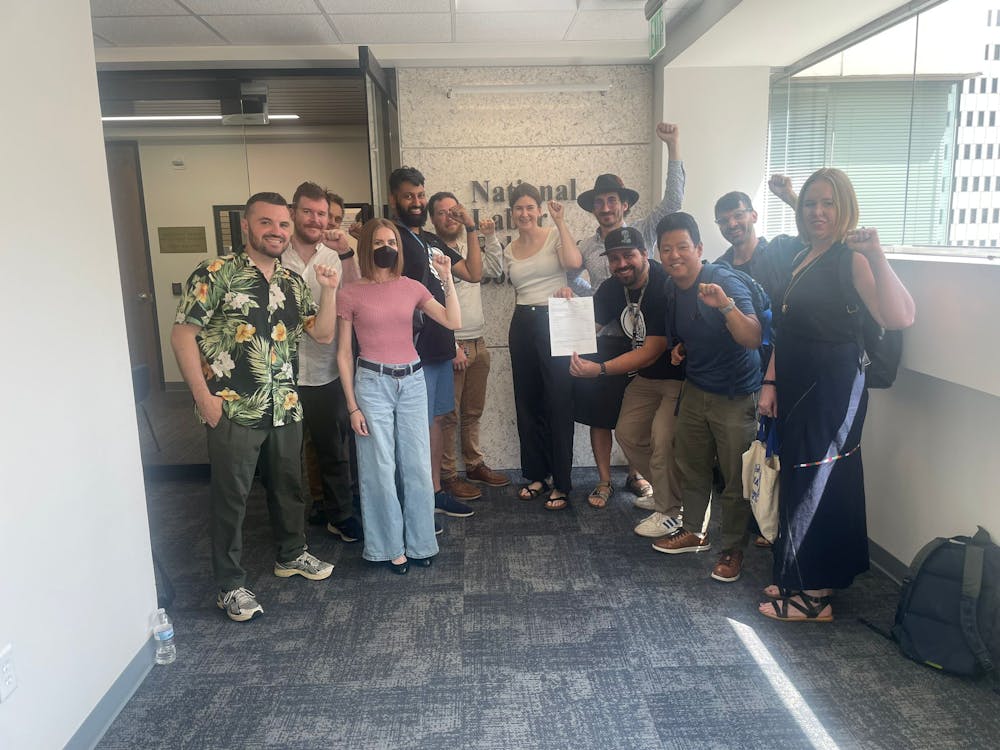Kendrick Lamar released his newest album on March 16 at midnight, a week earlier than anticipated. To Pimp a Butterfly, his third studio album, marks a new peak in Lamar’s musical career as it not only is a new musical direction for him, but also has a larger scope in its message than any of his previous works.
Lamar’s debut album Section.80, released in 2011, demonstrated his ability to write hip hop that was simultaneously innovative, true to the roots of the genre and socially conscious. This ability was further displayed on his 2013 album good kid, m.A.A.d city, which chronicled his childhood, his experiences with violence, love and societal pressures, and how he has become the person he is today.
Influenced by artists like Miles Davis, Tupac Shakur and Parliament, this album is jazz, funk, soul and modern hip-hop fused into a distinctive, powerful sound. Although the album is less accessible than any of Lamar’s previous work, the composition and musical complexity is outstanding.
With modern jazz musicians like Thundercat and Lalah Hathaway as well as producers such as Terrace Martin and Flying Lotus, To Pimp a Butterfly is a precisely composed collection of musical styles that come together to form a beautiful whole.
At the end of certain songs throughout the album, Lamar recites a poem he has written, repeating what he has previously stated and then adding more and more as the album progresses. This fits in perfectly throughout the album as each break in the poem conceptually leads into the following song.
The first half of the album contains some incredible tracks such as the relentlessly funky “King Kunta,” the dark, methodical jazz tone of “u,” and the first interlude “For Free?”, a reference to “Tramp” by Otis Redding that features some of Kendrick’s fastest and most intelligent lyricism. However, the album reaches an ideological peak on the back half of the album.
“The Blacker the Berry,” the second single from To Pimp a Butterfly, is a powerful track conveying the world as a grimy, bloody wasteland and brutally revealing the reality of systematic racial oppression. In an explosion of emotion and anger, “The Blacker the Berry” culminates in the idea that gang violence plays into the hands of racial abuse.
The song also asserts that in order to rise against institutionalized racism, gang warfare must be quelled and the black population must unite under the banner of equality, as during the civil rights movements in 1960s America and in South Africa under Nelson Mandela. (Both movements are consistently referenced throughout the album.) The full development of this idea, as well as the completion of Lamar’s poem, occur in the grand finale of this album on the final two tracks.
The penultimate track “i” was released as the first single of To Pimp a Butterfly and won two Grammys for Lamar’s rap performance. However, the album version of “i” is much less clean and catchy than the single version. Lamar presents what is made to sound like a live performance of the track with a modified hook and an omitted musical outro.
Raw energy emerges on the album version of this song, fitting into the overall album seamlessly. The track is about self-love and compassion, yet the album version is cut off toward the end of the track as a fight breaks out in the crowd. Lamar attempts to regain control of the room, talking about how many of his friends have died and how we have to “appreciate the little bit of life we got left.”
He then breaks out into an a capella verse, discussing how the n-word used as an oppressive slur was twisted from the root “Negus,” meaning “black emperor, king, ruler.” He states that it is a word whose true meaning was buried throughout history, colonization, slavery and patterned racism. He believes the word’s power must be regained, ending the track by calling himself “Kendrick Lamar, by far, realest Negus alive.”
In the final track of the album “Mortal Man,” Lamar raps over a brooding jazz beat, discussing reputation and legacy and repeating the line “when the shit hit the fan, is you still a fan?” This touches on the question of how loyal his listeners are and whether they can accept his message while recognizing that he is a flawed person who makes mistakes, hence the song title.
He states how he wishes to further the movement of Nelson Mandela and be a leader in the push for a world of equality and justice. As the music ends, Lamar returns to the poem he has been building throughout this album and recites it in its entirety. It touches on every theme and idea developed during To Pimp a Butterfly and beautifully depicts his ideology. The end of the poem reveals that the entire time, Lamar has been reciting the poem to Tupac Shakur.
Using an interview with Shakur from the ‘90s, Lamar fits in his own questions and responses, creating what sounds like a seamless interview between the two musical icons. Tupac talks about his success and his personal views on life. He sees sparks of imminent class warfare and believes that the next racial riots will not result in looting but rather bloodshed and murder. Lamar responds by saying that the only true hope we have left is sharing ideology and uniting as one through the power of music.
The album ends as Lamar recites a final poem for Tupac, revealing the metaphor of the butterfly in the album title. In the background, a spiritual jazz beat begins.
A symbol of institutionalized racism, the caterpillar attempts to keep the butterfly restrained within a cocoon. Lamar states that as ideas take root within the butterfly, “wings begin to emerge, breaking the cycle of feeling stagnant.” The butterfly emerges, free, and sheds light on the reality of the situation, ending the struggle between the caterpillar and the butterfly.
As this is ending, the music rises. Lamar asks for Tupac’s opinion, but there is only music, growing in volume. He calls out “Pac? Pac?” over the music, and as the beat rises into cacophony it suddenly cuts off. We hear Lamar call out one last time, “Pac?!” to deafening silence and the end of the album.
In his previous work, Lamar has asked his listeners not to view him as a rapper but rather as a writer. He believes that his genre is not hip-hop, but universal music, speaking to everyone. To Pimp a Butterfly is more than an album and more than a story: It is an ideology. It is the culmination of centuries of racial violence, anger, hurt, frustration and disillusionment with society manifested in the work of one of the most talented musicians and storytellers to ever live.
On To Pimp a Butterfly, Lamar has crafted one of the most thoughtful, intelligent and provoking pieces of music of the past decade. This album will be remembered not only as a pillar of modern hip-hop, but of modern music and one of the great works of the 21st century. To Pimp a Butterfly solidifies Kendrick Lamar’s legacy as a musician, as a writer and as a king.




